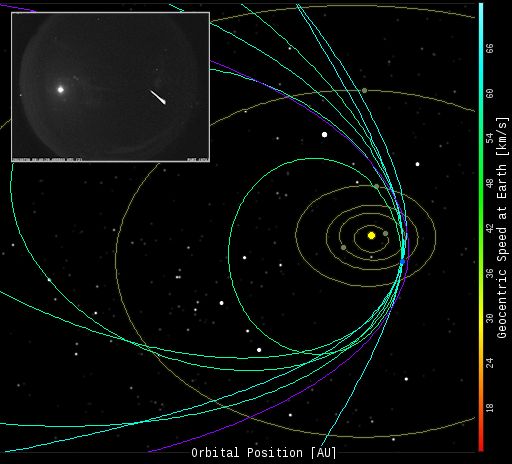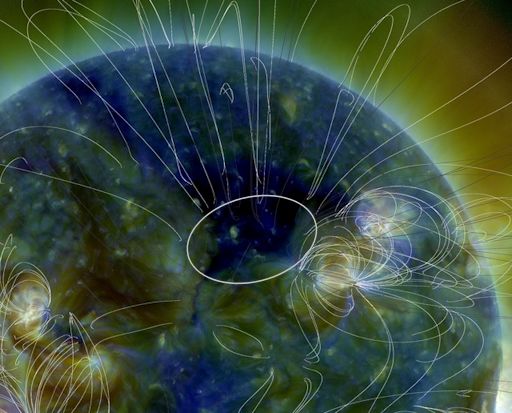Listen to radar echoes from satellites and meteors, live on listener-supported Space Weather Radio. | | |
SPACE WEATHER FACT CHECK: Many readers are asking about a report in the Washington Examiner, which states that a Carrington-class solar storm narrowly missed Earth two weeks ago. There was no Carrington-class solar storm two weeks ago. On the contrary, solar activity was low throughout the month of July. The report is erroneous. The possibility of such a storm is, however, worth thinking about: A modern Carrington event would cause significant damage to our high-tech society. Solar flare alerts: text, voice.
FIRST PERSEIDS OF 2013 (Updated): Earth is entering a broad stream of debris from comet 109P/Swift-Tuttle, source of the annual Perseid meteor shower. Although the shower won't peak until August 12-13, when Earth hits the densest part of the stream, the first Perseids are already arriving. "Despite poor weather over our network of meteor cameras, we have detected six Perseid fireballs since July 30th," reports Bill Cooke, head of NASA's Meteoroid Environment Office. He made this plot showing the orbits of the meteoroids:

In the diagram, the green lines trace the orbits of Perseid meteoroids. All six intersect Earth (the blue dot). The orbit of the parent comet is color-coded purple. An inset shows one of the fireballs shining almost as brightly as the Moon: video.
The shower is just getting started. Rates should remain low for the next week as Earth penetrates the sparse outskirts of the debris stream, then skyrocket to ~100 meteors per hour as the calendar turns to the second week of August. Stay tuned for more fireballs. [meteor radar] [NASA: Perseid fireballs].
Realtime Meteor Photo Gallery
CORONAL HOLE: Magnetic fields in the sun's northern hemisphere have opened up, forming a coronal hole. This UV image from NASA's Solar Dynamics Observatory shows the opening as a dark gap in the sun's upper atmosphere:

Coronal holes are places in the sun's atmosphere where the magnetic field bends back and allows the solar wind to escape. A stream of solar wind flowing from this particular coronal hole will reach Earth on August 3-4. Its impact could spark a minor geomagnetic storm, so high-latitude sky watchers should be alert for auroras. Geomagnetic storm alerts: text, voice.
Another space weather fact check: News sources such as space.com and Fox News recently reported a "giant hole in the sun." Fact: The "giant hole" was a fairly run-of-the-mill coronal hole, only slightly larger than usual. In defense of the journalists, their stories were prompted by a NASA report. The report was accurate, but it showed a high-contrast image of the sun, which made the coronal hole look bigger and deeper than it actually was. An SDO image taken at approximately the same time (July 18) shows the true scale of the hole.
Realtime Space Weather Photo Gallery
Realtime Aurora Photo Gallery
Realtime Noctilucent Cloud Photo Gallery
[previous years: 2003, 2004, 2005, 2006, 2007, 2008, 2009, 2011]
Realtime Comet Photo Gallery

